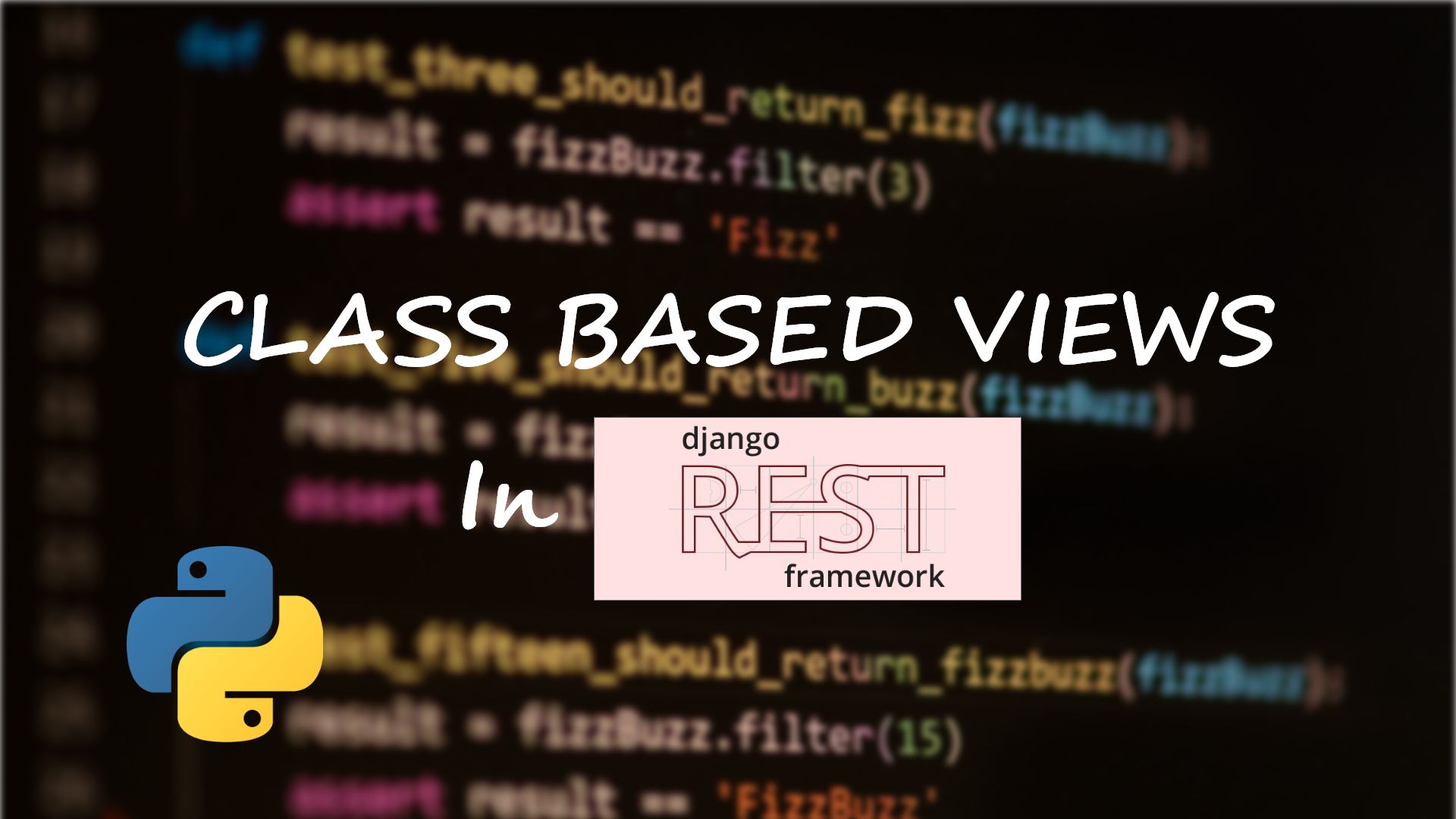Django Rest Framework Class Based Views
 Instead of writing our API function based, we can write our API class based. The advantage it brings is a powerful pattern which allows us to reuse the common functionality keeping our code DRY.
Instead of writing our API function based, we can write our API class based. The advantage it brings is a powerful pattern which allows us to reuse the common functionality keeping our code DRY.
GitHub-Link For Project :
https://github.com/ShivaBsnt/DjangoRestFramework.git
In previous blog we have used function based views to build our API. So we will use same model and serializer for our classed based views. In case you have missed it, here is the link.(Django Rest Framework Function Based Views)
Let’s have a glance at our model and serializer and quickly jump into views. Our URL will be slightly different than function based views as we are using class based views.
Model
1
2
3
4
5
6
7
8
from django.db import models
class Student(models.Model):
first_name = models.CharField(max_length=10)
last_name = models.CharField(max_length=10)
email = models.EmailField()
age = models.PositiveSmallIntegerField()
number = models.CharField(max_length=15)
Serializer
1
2
3
4
5
6
7
8
9
from django.db import models
from rest_framework import serializers
from Common.models import Student
class StudentSerializer(serializers.ModelSerializer):
class Meta:
model = Student
fields = "__all__"
URL
1
2
3
4
5
6
from django.urls import path
from .views import Student
urlpatterns = [
path('student/', Student.as_view(), name='student'),
]
Class Based Views
Now, let’s rewrite our API using class-based views.
1
2
3
4
5
6
7
8
9
10
11
12
13
14
15
16
17
18
19
from rest_framework.response import Response
from rest_framework.views import APIView
from Common.serializers import StudentSerializer
from Common.models import Student
class StudentAPIView(APIView):
"""List all students, or create a new student."""
def get(self, request): # gets all student objects from database
student = Student.objects.all() # sends queryset for serialization
serializer = StudentSerializer(student, many=True) # sends data obtained from serializer into response
return Response(serializer.data)
def post(self, request):
serializer = StudentSerializer(data=request.data) # sends data requested for deserialization
serializer.is_valid(raise_exception=True)# validates requested data
serializer.save()# saves data to database
return Response(serializer.data)# returns saved data as a response
Unlike function based views, we have not checked the methods of incoming request by ourself above but the request has been dispatched to appropriate function .get() and .post() defined by us. Magic!!!😲
The magic didn’t happened by itself. Behind every great magic trick there is a tool hiding all the secrets. Likewise APIView here hides all the secret and lets magic to happen. Using an APIView is pretty much similar to using regular view as it inherits Django View class . All the incoming request is handled inside and at the end forwarded to appropriate function.
Conclusion
Class based views are harder to read and understand sometime as it hides code in parent classes but it comes with great advantage of code reusability and extendibility. Likewise, it supports Object oriented techniques such as mixins( multiple inheritance). But saying that class based views is always the superior is a great mistake.
References
- more, R., 2022. Class-Based Views vs. Function-Based Views. [online] Simple is Better Than Complex. Available at: https://simpleisbetterthancomplex.com/article/2017/03/21/class-based-views-vs-function-based-views.html [Accessed 10 February 2022].
- Christie, T., 2022. Views - Django REST framework. [online] Django-rest-framework.org. Available at: https://www.django-rest-framework.org/api-guide/views/ [Accessed 12 February 2022].
- Christie, T., 2022. 3 - Class based views - Django REST framework. [online] Django-rest-framework.org. Available at: https://www.django-rest-framework.org/tutorial/3-class-based-views/ [Accessed 12 February 2022].






Leave a comment